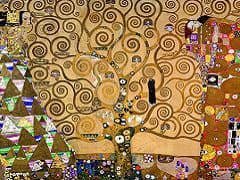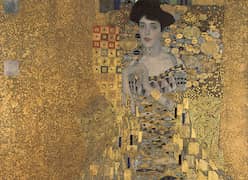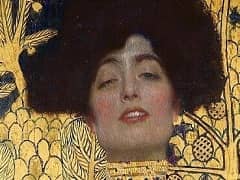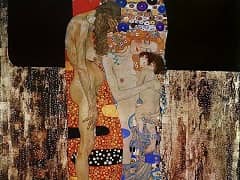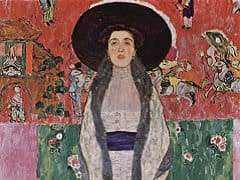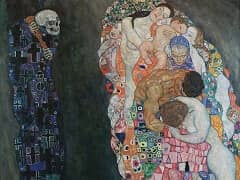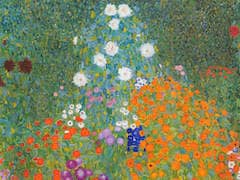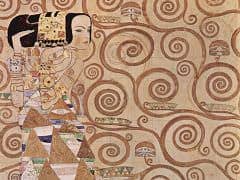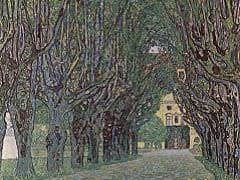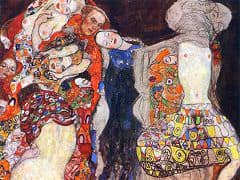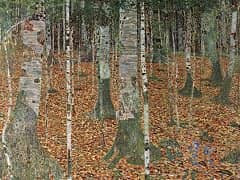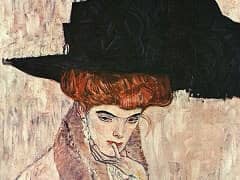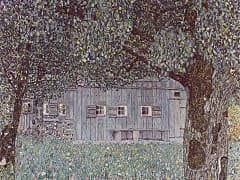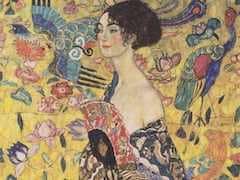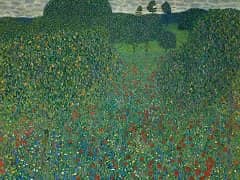Schloss Kammer at Lake Atter, 1908 by Gustav Klimt
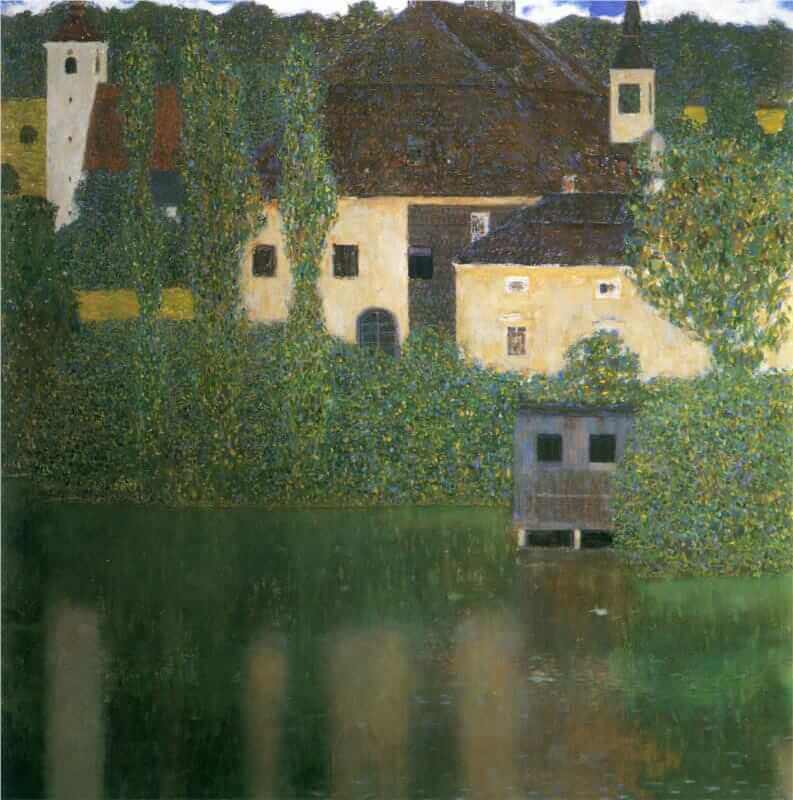
Around 1908 Klimt seems to have set himself a new task: to incorporate buildings into his landscapes. He had made two previous attempts to do so, in 1898 and 1901, but from this point onwards they
appear frequently. This painting typically includes Klimt's three main landscape elements - water, vegetation and buildings.
Klimt's scenes of houses and villages on the lakeside are similar in certain respects to ancient Egyptian art, as well as to contemporary developments in Cubism. The Egyptians' images of the human
body combined the different elements seen from the most recognizable or iconographic angle. The head, for example, is shown in profile, while the eyes are seen from the front.
Picasso, meanwhile, was distorting the human face in a similar way. Klimt has done exactly the same with his buildings. The houses and two turrets are all
presented almost face on, while the roofs are presented as symmetrical triangles, with barely a hint of foreshortening or perspective. The repetition of windows and trees and their reflections locks
together the elements of the composition.
Unusually, Klimt has mixed three rather different painting techniques within this landscape, corresponding to the three elements of water, vegetation and buildings. The water is painted with a
wet-in-wet brushstroke, so that one colour has been allowed to run into another. The trees and bushes are painted in an almost Pointillist style, with tiny dots of colour delineating each individual
leaf. The houses are painted with flat, rather dry strokes, imitating the stone surfaces and tiled roofs of the actual buildings. None of his other landscapes treats the various elements quite so
differently, perhaps indicating that he regarded this scene as an unsuccessful experiment.


